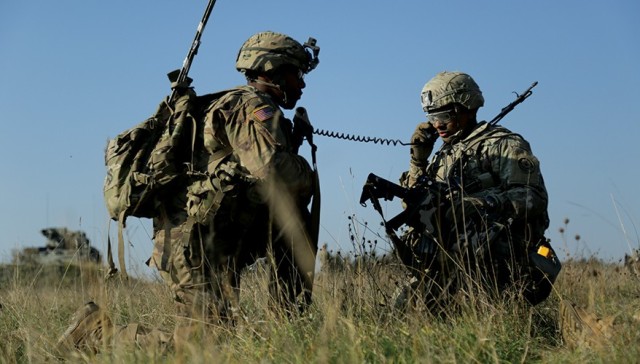ABERDEEN PROVING GROUND, Md. (May 26, 2020) — Army Futures Command (AFC) is exploring ways to adapt fifth-generation (5G) wireless technology for use on the future multi-domain battlefield.
The Command, Control, Communications, Computers, Cyber, Intelligence, Surveillance and Reconnaissance Center (C5ISR), a division of AFC’s Combat Capabilities Development Command, leads science and technology research related to adapting and adapting next-generation commercial communications infrastructure for use in tactical environments.
“We’re very excited about the technology behind 5G,” said Michael Monteleone, director of space and ground communications at the C5ISR Center. “From an Army perspective, the value of this technology is in the way it connects with and enables other capabilities.”
The C5ISR Center is particularly interested in evaluating and adapting network slicing and beamforming technologies, Monteleone said, and the center is integrating the results of those projects — some of which have been in the works for several years — with other technologies to deliver capabilities for warfighters to use starting in fiscal year 2023.
Network slicing enables the creation of multiple virtual networks on a shared physical infrastructure. Software can then be used to tune and customize the capacity, latency, and cybersecurity of these “slices” to support mission-specific needs.
“The introduction of network slicing technology into the tactical domain will transform tactical networks from inflexible, slow-to-adapt networks to high-performance, flexible networks that can be configured on-demand to execute the mission,” said Dr. Akbar Qureshi, principal engineer for the C5ISR Center’s Tactical Communications Division.
Directional beamforming focuses radio signals toward specific receiving devices rather than the typical signal being spread in all directions from a broadcast antenna. This technique allows for spectrum reuse, increased data throughput, and near-instantaneous adaptation based on network needs, changing environmental characteristics, and resource availability.
Beamforming allows soldiers to get closer to the enemy while significantly reducing the chances of being detected.
“Directional beamforming makes it much harder for an enemy to jam or detect our directional signals,” said Dan Duvac, C5ISR Center’s Radio Frequency Communications (RFC) division chief. “If our soldiers can get closer to the front lines of the battle and remain undetected by the enemy, that’s a huge advantage for us.”
Monteleone said both beamforming and network slicing technologies will make spectrum use for tactical communications more efficient, allowing the Army to “do more without incurring additional costs.”
Additionally, the costs associated with developing and implementing these technologies are falling as commercial organizations race to bring 5G to the masses.
“Industry is driving the development and implementation of commercial 5G,” Monteleone said, “but we encourage industry to consider how they can apply their innovations to the tactical environment and bring their ideas to us.”
The C5ISR Center utilizes Cooperative Research and Development Agreements and Small Business Innovation Research Programs to achieve partnerships with industry. Interested parties can request a technical exchange meeting through the organization’s website: https://c5isr.ccdc.army.mil/.
For more information, contact the C5ISR Center Public Affairs Office at usarmy.apg.ccdc-c5isr.mbx.pao@mail.mil.
———
The C5ISR Center is the Army’s applied research and advanced technology development center for C5ISR capabilities. As the Army’s lead integrator for C5ISR technologies and systems, the Center develops and matures capabilities that support all six of the Army’s modernization priorities to deliver information superiority and tactical advantage to the joint warfighter.
The C5ISR Center is part of the U.S. Army Combat Capabilities Development Command. Through collaboration across the command’s core technology competencies, CCDC leads the discovery, development and delivery of the technology-based capabilities needed to increase the lethality of Soldiers to win the nation’s wars and come home safely. CCDC is a major subordinate command of the U.S. Army Futures Command.





